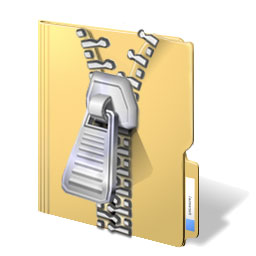

- #Mac os zip select files with folder structure how to#
- #Mac os zip select files with folder structure mac os#
- #Mac os zip select files with folder structure install#
- #Mac os zip select files with folder structure archive#
You can change the terminal’s directory to the desktop using the command prompt.

After finding the application, click to open. You can either locate it from the list of applications in the ‘Utility’ folder, or you can search for the terminal on your computer’s search box. There are two ways to open the terminal on Mac. If you move the zipped file, you intend to open it to your desktop, and it is easier for the file to be located and opened. To open zipped files on Mac, follow these simple steps. You can locate the terminal from your computer’s utility folder or search for ‘Terminal’ on your search box. The terminal has a zip command that helps you zip and unzip files on Mac.
#Mac os zip select files with folder structure mac os#
The terminal is an application on the Mac OS which provides text-based access to your computer’s OS.
#Mac os zip select files with folder structure how to#
How to Open Zip Files on Mac with Terminal Your file will then be unzipped, and you can now access its contents.
#Mac os zip select files with folder structure archive#
Optionally, you can unzip your file on Mac by right-clicking the zipped file and select ‘Open With’ From the list of options to appear, choose Archive Utility.Once the files have been selected, press ‘Control,’ then select ‘Compress.’ Also, you can right-click on the desired files and tap on ‘Compress.’ Your files will then be compressed to a single file, with the original file staying intact.If you aren’t using a mouse, you can hold down your trackpad while dragging through to select the files. Select all the files you need to compress by holding down your mouse and drag through the files to be zipped.If you want to learn how to zip two files together on a mac, follow these quick and easy steps to zip multiple files on your Mac. From the pop-up menu to appear on the screen, tap on ‘Compress’ to zip the file. To zip a single file on Mac, all you need to do is right-click the file you intend to zip. On Mac computers, files can either be zipped as a single file or as multiple files.

When you zip a file, the file gets compressed, and every redundant file enables it to take up a smaller space and be sent and delivered much faster. You will learn how to zip and unzip files on your Mac in this article. Sending such could take a long time to deliver, takes up too much space, and needs to be zipped. Most files are usually large and can be quite inconvenient, especially if you email the file to someone else. This article covers all the information you want to learn how to zip 2 files together, how to unzip files on Mac, how to fix corrupted zip files, and how to recover lost or deleted zip files on Mac with data recovery software (Download the free trial by clicking the button). Next, you can choose the format for your archives.It’s a common action to zip and unzip files on your Mac at work or for study since emails as well as cloud services can’t save files with large size. The default is the directory where the files live, but you can optionally choose a folder where all such archives end up. If you select a bunch of files in the Finder, right-click them, then click “Compress,” you can create a ZIP file.įirst, you can configure where the compressed file will end up. The bottom half of this preference pane concerns archives created by this application. By default, such files are sent to the trash, but you can optionally leave the archive alone or even delete it outright. Next, you can choose what happens to archive files after you unarchive them. The default is in the same archive as the archive itself, but you can choose a specific folder if you want. You’ll find the new Archives pane in the bottom section of the System Preferences.įirst, you can choose where unarchived files end up. You’ve now added the Archives pane to your System Preferences.
#Mac os zip select files with folder structure install#
Double-click this file and System Preferences will launch, asking you if you’d like to install the pane.


 0 kommentar(er)
0 kommentar(er)
